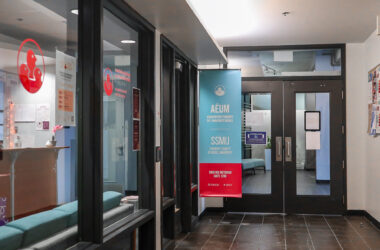The Montreal Jewish General Hospital has been working over the last year to contain Canada’s first large hospital outbreak of a drug- resistant strain of bacteria. While Klebsiella pneumonia Carbapensemase-producing Klebsiella pneumonia (KPC-Kp) is new in Canada, some American hospitals in New York, Baltimore, and North Carolina have been fighting KPC-Kp for more than 10 years. The strain first appeared in the United States in 1999.
Dr. Mark Miller, the head of the JeHG’s division for infectious diseases, presented on the first Canadian breakout of KPC-Kp at the 51st Interscience Conference on Antimicrobial Agents and Chemotherapy (ICAAC) in Chicago on Sept. 18. According to his report, the bacteria began to spread in August, 2010. Within only a few weeks Miller and his team of doctors and nurses managed to get the bacteria’s transmission relatively under control. Researchers first examined bacteria from a patient’s tracheostomy culture and soon realized that it was resistant to common antibiotics. Further investigation led them to realize that they were handling KPC-Kp, and they immediately implemented appropriate measures to limit transmission.
Klebsiella pneumonia (Kp) lives in the human intestine. Healthy people can carry the bacteria without symptoms, but can cause pneumonia or infections in hospitals, where many people with weakened immune systems congregate. When the bacteria produce Klebsiella pneumonia Carbapensemase (KPC), doctors really begin to worry, because they become resistant to the traditional methods of treatment. Only two antibiotics can be used to treat the bacteria, but patients with certain illnesses or pre-existing conditions may not be able to take the necessary medicine. “It’s a major concern,” Miller said. “There are real limitations in what you can be treated with.”
Doctors at the hospital first began by isolating and actively monitoring affected individuals. Unfortunately, transmission continued, and only subsided once a dedicated quarantine ward was opened. In total, 27 patients contracted KPC-Kp, but only four or five patients actually fell ill with symptoms.
“As far as we know, there is nobody who died directly from KPC-Kp,” Miller said. “The antibiotics to which most of our isolates were susceptible included colisitin, tigecycline and gentamicin,” Victor Leung, a co-author of the study presented at the ICAAC, said. “Unfortunately, each of these antibiotics has side effects.”
Since the end of the study in June 2011, there have been seven new cases of patients colonized by the bacteria. Dr. Miller suggested that this is only the “beginning of a problem that will be with us indefinitely.”
Nonetheless, he hopes to prevent the spread and get the number of infected patients down to zero. This bacteria is causing hysteria, in part, explained Miller, because of its relation to a relatively recent discovery of a bacteria that is resistant to all antibiotics. This superbug, the New Delhi metallo-beta-lactamase (NDM), was discovered in India in 2008. Studies have since shown that NDM-producing Klebsiella pneumonia (NDM-Kp) can be found all over India, and this, Miller cautioned, is a major source of concern because of the popularity of travel to India for cheaper medical care. Doctors are worried that patients will bring the bacteria back home with them. Fortunately, there have been no outbreaks of the dangerous NDM-Kp as of yet in Canada. As to how the KPC-producing Klebsiella pneumonia got into Jewish General, doctors simply do not know.
They have, however, implemented strategies for managing future outbreaks. Leung propsed a universal process for screening all patients.
“[There’s a] need for a systematic laboratory detection method so that patients who are colonized or infected with Enterobacteriaceae expressing KPC can be identified and placed on contact precautions to prevent further transmission while in hospital,” Leung said.








